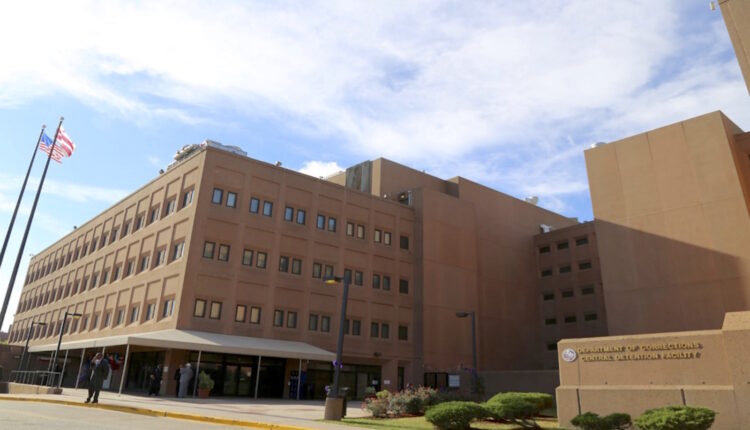Courtney Stewart and Jasmine L. Tyler: We can transform public safety in DC by prioritizing prevention over punishment
The recent deaths of three individuals in the DC jail bring to light the dire medical care and unsafe conditions that have led to numerous lawsuits. These are not new issues; the jail facilities have been criticized for decades over unsanitary and inhumane living conditions, unhealthy nutritional options and unacceptable or incompetent medical care, failings documented by the Corrections Information Council as early as 2002.
At a May meeting of the reconvened District Task Force on Jails & Justice, DC officials presented plans for $250 million of construction for new administrative offices and a two-level parking structure. Evidently, these are the Bowser administration’s priorities at a time when genuinely critical problems such as crumbling and dangerous facilities and inadequate programming space require immediate attention. This decision stunned those of us on the task force given the contents of our 2019 final report. Of our 17 comprehensive recommendations, the first 11 specifically outlined necessary steps to invest in community supports and services to decrease the population of the jail complex before any renovations or new construction should commence.
Washingtonians are understandably frustrated with the recent spate of carjackings, brazen shoplifting, and horrific gun violence. Yet the truth remains: Violent crime in the District has declined by 35% since the beginning of the year, according to Metropolitan Police Department statistics. When Mayor Muriel Bowser and the DC Council respond to public safety concerns with knee-jerk responses, the decision-making misses the mark and is always a step behind. Worst of all, it ignores the fundamental issues underlying crime in DC: the historic lack of investment in disadvantaged communities, particularly those that are predominantly Black. Among the many pervasive, longstanding consequences are family and community erosion, food deserts, trauma, chronic mental health issues, low employment rates, economic disparity, and displacement of residents due to gentrification.
As has been the case for years, the current administration ignores much-needed opportunities to invest in preventive measures that would result in safer communities. During periods of historically low crime rates earlier in the mayor’s term, the DC Council and other stakeholders called for implementing strategies that would foster strong, healthy and safe neighborhoods. However, as a recent Justice Policy Institute report reveals, many initiatives remain underfunded or unimplemented by the Bowser administration. This report — “Building a Brighter Future: A Plan to Invest in DC’s Emerging Adults” — highlights the urgent need for effective community-based programs and preventive measures to address the root causes of crime.
Once a national leader in innovative community safety strategies, the District has veered off course under Mayor Bowser’s leadership, undoing progress in crime prevention. A case in point is the People of Promise initiative, aimed at providing targeted resources and support to approximately 200 individuals at the highest risk of violence. A year and a half into the program, it has failed to connect with its intended population due to a lack of investment by the Bowser administration, resulting in dozens of preventable shootings and fatalities. The dissolution of critical planning groups such as the Comprehensive Homicide Elimination Strategy Task Force and MPD’s Community Policing Working Group further underscores the consequences of inaction.
Unfortunately, the District’s fiscal year 2025 budget perpetuates the cycle of harm by increasing funding to incarcerate young people while refusing to invest in programs previously passed by the council that would provide support for the District’s young adult population.
Even with evidence that lengthy prison terms are ineffective deterrents to crime, Mayor Bowser has expressed reservations about the highly successful Incarceration Reduction and Second Look Amendment Acts, leading to her support of legislation that would limit their scope and greatly undermine their effectiveness. With remarkably low recidivism rates, grantees under these programs have been at the forefront of public safety efforts by acting as mentors and violence interrupters — initiatives that unbelievably face the threat of reduced support in the upcoming budget.
Despite public support for a public health approach toward crime prevention, recent policy proposals have leaned heavily toward suppression efforts, such as allowing for the creation of drug-free zones, greenlighting high-speed chases and increasing the use of pretrial detention. Meanwhile, programming aimed at prevention continues to be neglected and underfunded.
The District can do better. Indeed, it has done better in the past. The District previously identified innovative solutions when the council prioritized forward-looking investments in preventive policies, programs, task forces and research. The Bowser administration has created the status quo, having made minimal progress in funding and implementing these recommendations — and much progress in undermining them. Addressing the root causes of violence demands a comprehensive “whole of government” approach that tackles underlying risk factors and societal needs. Perhaps most urgently, the District requires better leadership to expand violence prevention efforts and foster coordination among agencies — all of which is currently lacking.
Courtney Stewart is the founder and CEO of the National Reentry Network for Returning Citizens, and Jasmine L. Tyler is the executive director of the Justice Policy Institute.
About commentaries
The DC Line welcomes commentaries representing various viewpoints on local issues of concern, but the opinions expressed do not represent those of The DC Line. Submissions of up to 850 words may be sent to editor Chris Kain at chriskain@thedcline.org.



The planned benefit of a new DOC Annex, costing District taxpayers $500mm was documented in 2021 by J&J Task Force. The expected outcomes of a new Annex have been diluted by an off track focus on adim space rather than the creation of safe and humane living and programming space. If DC proceeds in this pointless direction, we all lose. The CDF begs to be torn down and it’s shameful unsafe housing conditions abandoned.